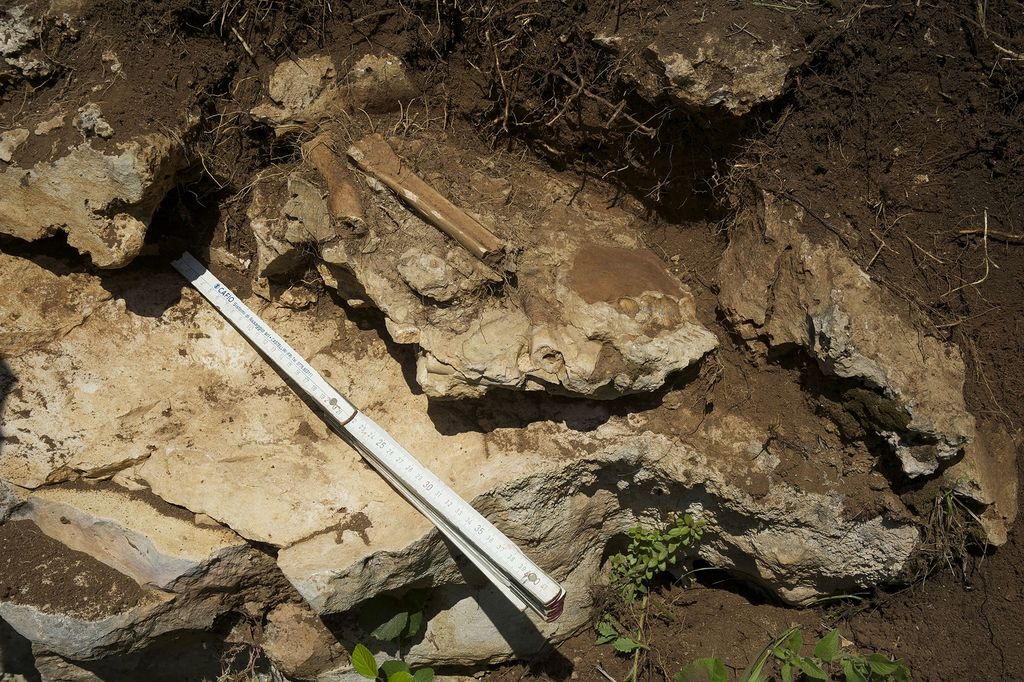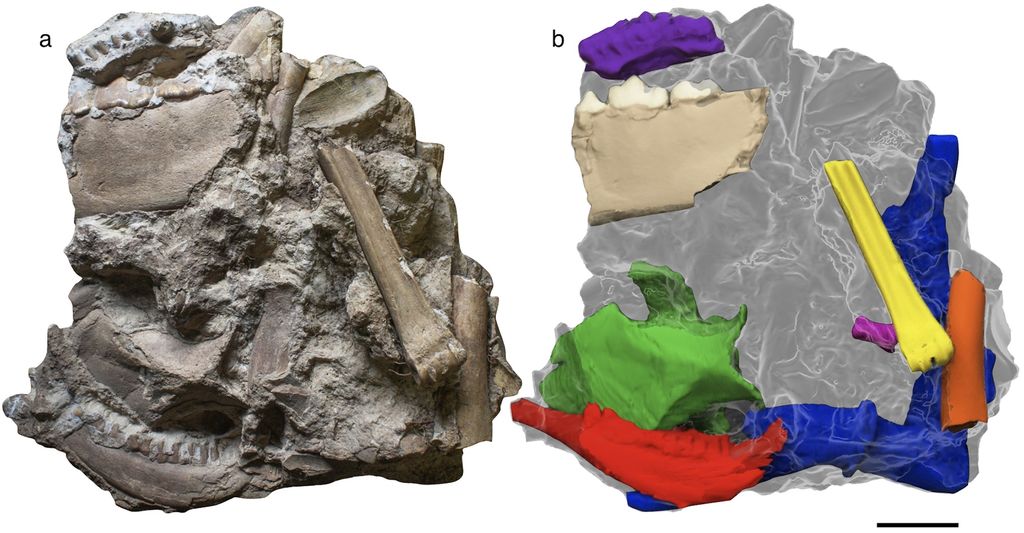
First Occurrence of the Short-faced Giant Bear Found in Italy
The Agriotherium, a giant short-faced bear, used to roam the Italian peninsula, too, as revealed by fossils of this species of ursid that have been found, for the first time in Italy, in Collepardo in the Province of Frosinone (central Italy). The group of researchers from the Department of Earth Sciences and the Sapienza Museum Network worked in collaboration with the CNR Institute for Environmental Geology and Geo-Engineering and the Italian Institute for Human Palaeontology. The study has been published on the Italian Journal of Geosciences.
Remains of Agriotherium, one of the largest carnivoran mammals that walked our planet, are extremely rare. Indeed, most of the remains found to date are the teeth and incomplete mandibles of 4-5 specimens. The fossil discovered in Collepardo – part of an hemimandible – was encased in a block of travertine together with the bones of other animals.
Dawid A. Iurino, a palaeontologist at Sapienza, used computer tomography (CT) to “extract” a digital model of the mandible without running the risk of damaging the precious remain. The fossil was scanned with the help of experienced radiologist Massimiliano Danti at the Rome Vannini Hospital. Now, the 3D-printed mandible, realized in the “Sapienza Museum Network Lab”, is housed at the PaleoFactory Lab of the Sapienza Department of Earth Sciences. Moreover, the team also re-examined the remains of short-faced bear that had been found in the Eighties (which are conserved at the Italian Institute of Human Palaeontology) and also identified a right ulnar bone of the same species.
"The Agriotherium was an enormous bear,” explains Raffaele Sardella, Manager of the PaleoFactory Lab. “It was over 2.5 meters long and weighed about 900 kg. It also easily adapted to all types of environments as is evident from studies of its teeth. It was omnivorous and also fed on large prey and carcasses. This great mammal was extinct about 2.6 million years ago, as it was not able to adapt to and survive the profound climactic and environmental changes that characterised the passage from the Pliocene to the Pleistocene Era.”
The study of the travertine block, which contained the Agriotherium mandible section, also allowed the researchers to reach palaeo-environmental conclusions thanks to the collaboration with researchers from the CNR Institute for Environmental Geology and Geo-Engineering (CNR-IGAG): Mauro Brilli, Francesca Giustini and Ilaria Mazzini. In particular, the researchers were able to prove the shift from a fresh-water environment that was delimited and subject to a great deal of evaporation to a progressively more open and humid environment, identifying a shift from a hot climate to more temperate humid climate.
“This discovery,” concludes Luca Bellucci from the Sapienza Museum Network, “is not only important because it has allowed us to identify this large carnivoran in what is now Italy and extend our knowledge on palaeographic distribution, but also because it allowed us to push back the date of the site where the mandible was found to a much more ancient epoch.” Indeed, this fossil has allowed us to date the Collepardo site to the Pliocene Era, ca. 3 million years ago, more than 500,000 years older than had been previously hypothesized.
References:
First Occurrence of the Short-faced Bear Agriotherium (Ursidae, Carnivora) in Italy: Biochronological and Palaeoenvironmental Implications – Luca Bellucci, Italo Biddittu, Mauro Brilli, Jacopo Conti, Marco Germani, Francesca Giustini, Dawid Adam Iurino, Ilaria Mazzini & Raffaele Sardella – Italian Journal of Geosciences https://doi.org/10.3301/IJG.2018.31
For further information
Luca Bellucci
Sapienza Museum Network
luca.bellucci@uniroma1.it
Raffele Sardella
Department of Earth Sciences, Sapienza University
Raffaele.sardella@uniroma1.it







